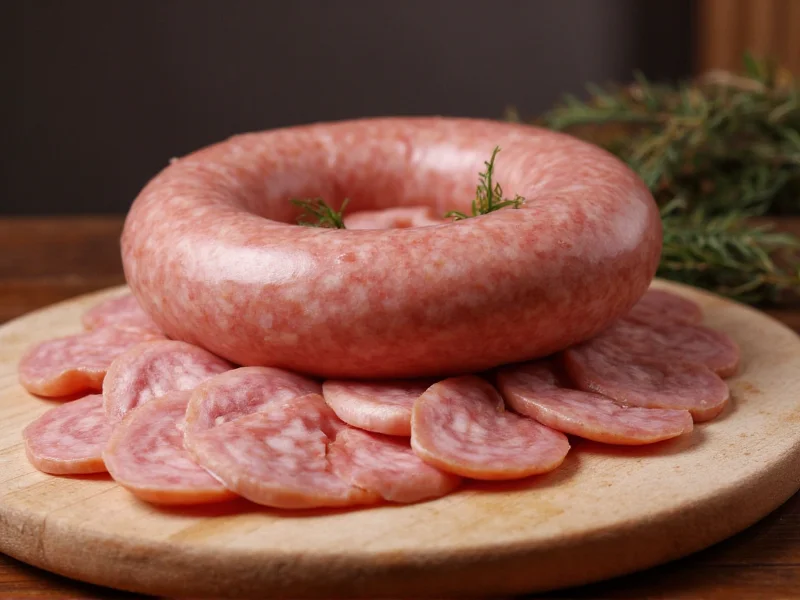The Essential Foundations of Sausage Making
Creating high-quality homemade sausages begins with understanding the fundamental components that determine texture, flavor, and safety. The magic happens through the emulsion of meat proteins, fat, and seasonings—a delicate balance that transforms simple ingredients into culinary delights. Professional butchers and home sausage makers alike follow time-tested principles that ensure consistent results every time.
Required Equipment for Successful Sausage Production
While commercial operations use industrial machinery, home sausage making requires surprisingly minimal equipment. The essential tools include:
| Equipment | Purpose | Home Alternative |
|---|---|---|
| Meat grinder | Properly textures meat and fat | Stand mixer attachment or hand-crank grinder |
| Sausage stuffer | Evenly fills casings without air pockets | Grinder tube attachment or piston stuffer |
| Sharp knives | Trimming meat and fat | Quality chef's knife |
| Digital scale | Precise ingredient measurement | Essential (no good substitute) |
| Thermometer | Monitor meat temperature | Instant-read thermometer |
Meat Selection and Preparation Principles
The quality of your sausage depends primarily on your meat selection. Different sausage varieties require specific meat-to-fat ratios that affect both texture and flavor development. For fresh sausages like breakfast links or Italian sausage, aim for a 70-30 meat-to-fat ratio. Cured sausages like salami often use a 65-35 ratio to accommodate the drying process.
Chill all components thoroughly before processing—meat, fat, equipment, and even your workspace. Keeping temperatures below 40°F (4°C) prevents fat smearing and bacterial growth during the critical grinding phase. Cut meat and fat into 1-inch cubes for optimal grinding results. Never use previously frozen meat for sausage making, as ice crystals damage cell structure and compromise texture.
Seasoning Science and Flavor Development
Seasoning isn't just about taste—it's a chemical process that affects texture and preservation. Salt (typically 2.5% of total meat weight) extracts myosin proteins that create the essential protein matrix binding everything together. Without sufficient salt, your sausage will crumble when cooked.
For traditional sausage making, follow these seasoning guidelines:
- Salt: 2.5% of total meat weight
- Pepper: 0.5-1% depending on variety
- Garlic: 0.2-0.5% for most European styles
- Nitrite curing salt: 0.25% for cured products
- Sugar: 0.5-1% to balance acidity
Mix seasonings thoroughly with a small amount of water or wine before incorporating into meat for even distribution. Remember that flavors develop over time—allow seasoned meat to rest refrigerated for 12-24 hours before stuffing for optimal flavor integration.
Step-by-Step Sausage Production Process
Follow this professional sausage making sequence for consistent results:
- Preparation: Chill all equipment and ingredients. Cut meat and fat into uniform cubes.
- Grinding: Use coarse plate first, then fine plate for smooth texture. Never force meat through grinder—this generates heat.
- Seasoning: Mix seasonings with liquid component, then blend thoroughly with meat using clean hands or mixer.
- Testing: Cook small patty to check seasoning and texture before proceeding.
- Casing Preparation: Rinse natural casings in cool water, flush with water to check for holes.
- Stuffing: Fill stuffer tube, eliminate air pockets, maintain consistent pressure while filling.
- Linking: Twist sausages at regular intervals using consistent rotation direction.
- Resting: Refrigerate for 12-24 hours before cooking to allow flavors to develop.
Curing and Preservation Techniques
Understanding the difference between fresh and cured sausages is critical for food safety. Fresh sausages contain no curing agents and must be refrigerated and consumed within 2 days or frozen. Cured sausages use either:
- Quick cure: Sodium nitrite (Prague Powder #1) for smoked or cooked sausages
- Long cure: Sodium nitrate (Prague Powder #2) for dried sausages like salami
Never substitute table salt for curing salt—the proportions are critically different. Curing salt contains only 6.25% sodium nitrite, while table salt is 100% sodium chloride. Using table salt in place of curing salt creates dangerous conditions for botulism growth.
Troubleshooting Common Sausage Problems
Even experienced sausage makers encounter issues. Here's how to address frequent problems:
- Crumbly texture: Insufficient salt extraction or too-warm meat during mixing. Solution: Ensure proper chilling and mix longer after adding salt.
- Greasy appearance: Fat smearing from warm temperatures. Solution: Chill all components thoroughly before processing.
- Water pockets: Inadequate mixing or too much liquid. Solution: Reduce liquid content and mix until sticky.
- Casing splitting: Overstuffing or inconsistent pressure. Solution: Fill casings 80% capacity and twist consistently.
- Dull flavor: Insufficient resting time. Solution: Allow seasoned meat to rest 12-24 hours before cooking.
Storage and Cooking Guidelines
Proper storage ensures both safety and quality. Fresh sausages keep refrigerated for 1-2 days or frozen for 2-3 months. Cured sausages follow different protocols:
- Smoked sausages: Refrigerate up to 2 weeks or freeze for 2 months
- Dry-cured sausages: Store in cool, humid environment (50-60°F, 70-80% humidity)
- Cooked sausages: Consume within 4 days refrigerated
When cooking fresh sausages, never pierce the casing—this releases precious juices. Cook slowly over medium heat until internal temperature reaches 160°F (71°C) for pork or 165°F (74°C) for poultry sausages. Allow sausages to rest 5 minutes before serving for optimal juiciness.
Advanced Sausage Making Considerations
As you gain experience with basic sausage making techniques, consider exploring these advanced elements:
- Emulsified sausages: Products like hot dogs require precise temperature control during mixing to create stable protein emulsions
- Traditional regional varieties: Study authentic recipes from Germany, Italy, or Spain to understand cultural variations
- Alternative meats: Game meats like venison require higher fat content (up to 40%) for acceptable texture
- Natural casings vs. collagen: Natural casings provide superior texture and bite but require more preparation











 浙公网安备
33010002000092号
浙公网安备
33010002000092号 浙B2-20120091-4
浙B2-20120091-4